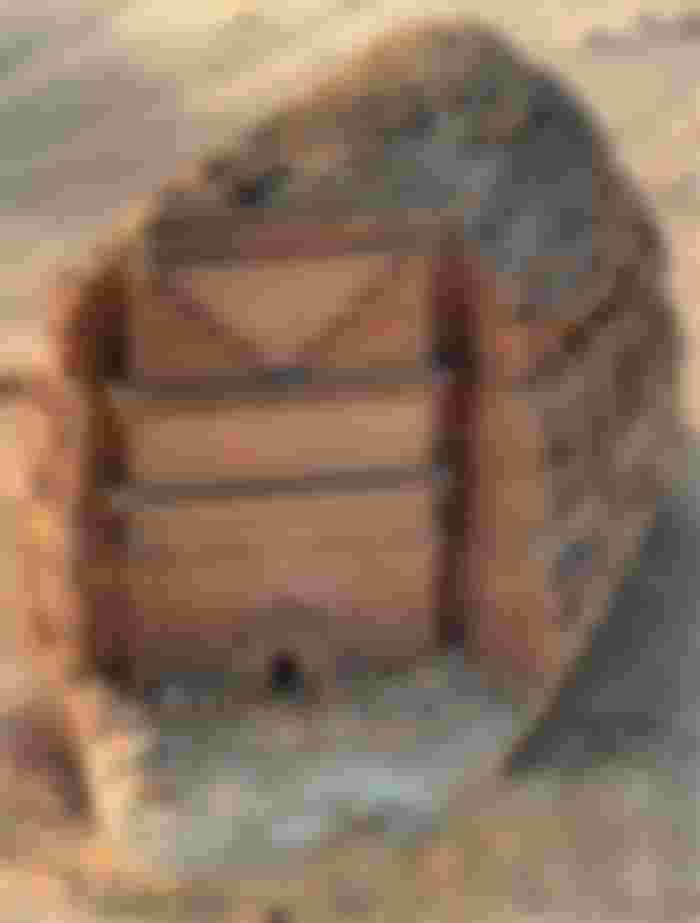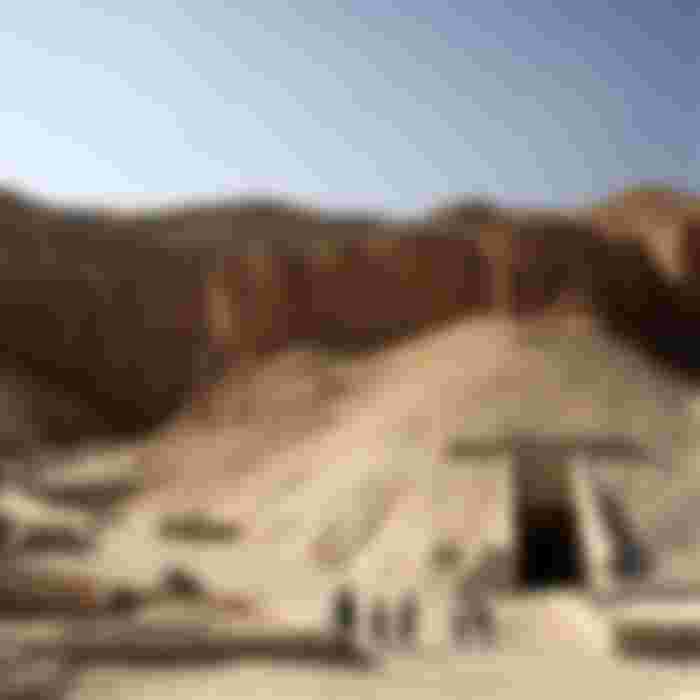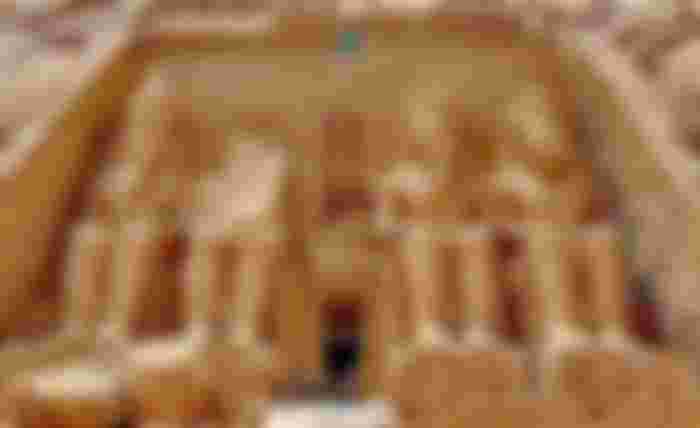building made of stone carving is called stone architecture. There are many examples of this type of architecture that are usually done on a large scale and with great difficulty. The tombs and temples below are some of the most beautiful and amazing buildings in the world. lets start our trip, shall we?
14. Tomb of the Kings

Located near the city of Paphos in southeastern Cyprus, it is a large cemetery dating back to the 4th century BC. The tomb is made of stone and is decorated with columns in the Doric style (classical style in ancient Greece), and despite its name, there is no sign of the royal family being buried there. Instead, it was the eternal tomb of Ptolemy nobles and other officials.
13. Lysian tombs


Lisian is a group of ancient cities located in the province of Antalya and Mugla in Turkey. Lysian tombs are a collection of intricately constructed tombs carved right on high cliffs. Most of these tombs are built like the facades of wooden houses in Lycian, and the stone tombs of the rich Lycians are delicately and very skillfully carved. Some of these tombs are decorated with reliefs of the dead and important events of that time. The entrance to these tombs is sealed with a sliding stone door.
12. Madain Saleh


Madain Saleh was the southernmost and largest seat of the Nabataean kingdom after Petra. This area, which the Nabataeans called Hegra, is located in Saudi Arabia and is known for its desert nature, and there are sandstone outcrops of various sizes. Hegra was built around residential areas and oases in that area during the first century AD. These tombs were built by carving sandstone outcrops. These four surviving cemeteries include 131 stone memorial tombs with an area of 13.4 km (8.3 miles).
11. Mugai Caves

The Mugai Caves are made up of 492 temples and are located 25 km (15.5 miles) southeast of Dunhuang City, an oasis on the Silk Road. These caves contain some of the finest examples of Buddhist art and date back 1,000 years. Construction of the Buddhist cave temples began in 366 AD to preserve sacred books and art. The Mugai Caves, along with the Longman and Yongang Caves, are three examples of China's most famous stone temples.
10. Longman Caves



The Longman Caves are located in central China, along the Jiangshan and Langmanshan Mountains. These caves can be seen at a distance of 1 km from north to south and there are more than 2100 depressions, 100000 statues, 40 pagodas (temples) and 3600 inscriptions and stone tablets in them. Construction of these caves began in 493 AD. The entrance to the Longman area is open to the public, and although it is not possible to enter the Longman caves, most of the existing works of art are visible from the outside.
9. Yongang Caves

Yongang Caves are ancient Buddhist temples in China's Shanxi Province. These caves were built mainly between 460 and 525 AD during the Wei Dynasty and are a prominent example of Chinese stone carving in the fifth and sixth centuries. The site includes 252 caves with more than 51,000 Buddhist statues and statues.
8. The churches of Gorem

After a volcanic eruption 2,000 years ago in the Cappadocia region of Turkey, molten material formed soft rocks. The softer rocks were eroded and destroyed by wind and water, but the hard rocks remained, forming the present fairy chimneys. The people of Gorm, in the heart of Cappadocia, realized that they could easily carve these soft stones into houses, churches, and monasteries. There are many examples of Byzantine art murals in this Christian shrine that showcase unique post-idolatrous artistic achievements.
7. Churches of Lalibela


Lalibla is one of the holiest cities in Ethiopia, ranked second after Axum, and is the center of pilgrimage for many countries. This rural town is known all over the world for its integrated churches that play an important role in the history of stone architecture. Although the exact date of construction of these churches is not known, many believe that these churches were built by the Ethiopian medieval civilization during the 12th and 13th centuries. St. George's Church is the most famous and last church built among the 11 churches in the area. The dimensions of this complex are 25 * 25 * 30 meters (82 * 82 * 98 feet) and there is a small baptismal pool outside the church.
6. Ajanta Caves


Ajanta Caves are stone monuments located in the Indian state of Maharashtra and date back to the second century BC. The complex includes several Vihara (residence hall) and Chaytia-Gryhas (historic dome hall) built on the slope of the mountain. Ajanta Caves have been abandoned since 480 AD. Over the next 1300 years, with the growth of the surrounding forests, these caves were hidden from view and from 1819 onwards, with the rediscovery of these caves, they were visited by a British officer.
5. Elora Caves



Elora Caves are located 30 km (19 miles) from the Indian city of Orangabad and are a manifestation of the stone architecture of this country. 34 Buddhist, Hindu and Jain stone temples, as well as monasteries, were built between the fifth and tenth centuries. Buddhist caves are among the oldest buildings and often have large, multi-storey structures carved into the mountain, including the main halls, bedrooms, kitchens and other rooms. The Kailasa Temple is an uniquely ornate ornament, and its massive structure, reminiscent of Mount Kailash, is made by carving a piece of stone twice the size of the Patton Temple in Athens.
4. Valley of the Queens

The Valley of the Queens is a place in Egypt where the wives of the Pharaohs are buried. It is located near the more famous Valley of the Kings, on the west bank of the Nile River in front of Thebes. The reason for choosing this area without water and grass in the western hills is its relative isolation and proximity to the capital. The cemetery has more than 70 stone tombs, many of which are beautifully decorated with splendor and electricity.
3. Valley of the Kings


The Valley of the Kings is a valley in Egypt that has been a tomb for kings and nobles for a period of 500 years from the 11th to the 16th century BC. The valley contains 63 tombs and rooms, ranging in size from a small pit to a 120-room tomb. The royal tombs are decorated with images of Egyptian mythology that represent the beliefs and rituals of the funeral at that time. All the tombs appear to have been open and looted in antiquity, leaving only the famous tomb of Tutankhamun safe from extensive looting.
2. Abu Simbel


Abu Simbel is an archeological site that includes two huge stone temples and is located in the south of Egypt on the west bank of Lake Nasser. These twin temples were actually carved into the mountains during the reign of Pharaoh Ramses the Great in the 13th century BC and are a memorial to him and his wife, Queen Nefertari. The complex was completely relocated in the 1960s to prevent drowning during the formation of Lake Nasser, a huge artificial reservoir formed after the construction of the Aswan Dam on the Nile River, and Abu Simbel remains one of Egypt's most important tourist attractions.
1. Petra


Petra, the legendary city of red that has a long history, was the ancient capital of the Nabataean kingdom. Undoubtedly, Petra is the most valuable treasure and the biggest tourist attraction of Jordan. This huge and unique city was carved by the Nabataeans centuries ago in the Great Valley of the Moses Valley, making it an important point on the Silk Road and connecting China, India and Saudi Arabia to Egypt, Greece and Rome. The most elaborate building in Petra is the "Treasury Ministry", which is carved on sandstone and its appearance is so great that everything seems small in front of it.


*********************************************************
hope you enjoy,
have a look at other articles of "Earth is beautiful" community,
*share the beauties.



























These places are soo sacred , solemn and secured and lastly very much more on spiritual that's why when we illuminate the road back to our ancestors, they have a way of reaching out, of manifesting themselves...sometimes even physically.